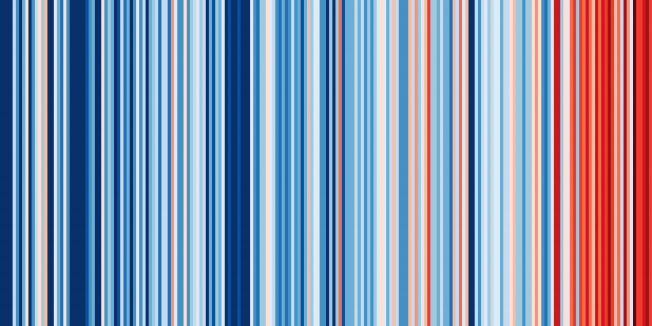Stochastic parameterization: Towards a new view of weather and climate models
Bulletin of the American Meteorological Society American Meteorological Society 98:3 (2017) 565-588
Abstract:
The last decade has seen the success of stochastic parameterizations in short-term, medium-range, and seasonal forecasts: operational weather centers now routinely use stochastic parameterization schemes to represent model inadequacy better and to improve the quantification of forecast uncertainty. Developed initially for numerical weather prediction, the inclusion of stochastic parameterizations not only provides better estimates of uncertainty, but it is also extremely promising for reducing long-standing climate biases and is relevant for determining the climate response to external forcing. This article highlights recent developments from different research groups that show that the stochastic representation of unresolved processes in the atmosphere, oceans, land surface, and cryosphere of comprehensive weather and climate models 1) gives rise to more reliable probabilistic forecasts of weather and climate and 2) reduces systematic model bias. We make a case that the use of mathematically stringent methods for the derivation of stochastic dynamic equations will lead to substantial improvements in our ability to accurately simulate weather and climate at all scales. Recent work in mathematics, statistical mechanics, and turbulence is reviewed; its relevance for the climate problem is demonstrated; and future research directions are outlined.Climate SPHINX: evaluating the impact of resolution and stochastic physics parameterisations in the EC-Earth global climate model
Geoscientific Model Development Copernicus Publications 10:3 (2017) 1383-1402
Abstract:
The Climate SPHINX (Stochastic Physics HIgh resolutioN eXperiments) project is a comprehensive set of ensemble simulations aimed at evaluating the sensitivity of present and future climate to model resolution and stochastic parameterisation. The EC-Earth Earth system model is used to explore the impact of stochastic physics in a large ensemble of 30-year climate integrations at five different atmospheric horizontal resolutions (from 125 up to 16 km). The project includes more than 120 simulations in both a historical scenario (1979–2008) and a climate change projection (2039–2068), together with coupled transient runs (1850–2100). A total of 20.4 million core hours have been used, made available from a single year grant from PRACE (the Partnership for Advanced Computing in Europe), and close to 1.5 PB of output data have been produced on Super- MUC IBM Petascale System at the Leibniz Supercomputing Centre (LRZ) in Garching, Germany. About 140 TB of postprocessed data are stored on the CINECA supercomputing centre archives and are freely accessible to the community thanks to an EUDAT data pilot project. This paper presents the technical and scientific set-up of the experiments, including the details on the forcing used for the simulations performed, defining the SPHINX v1.0 protocol. In addition, an overview of preliminary results is given. An improvement in the simulation of Euro-Atlantic atmospheric blocking following resolution increase is observed. It is also shown that including stochastic parameterisation in the low-resolution runs helps to improve some aspects of the tropical climate – specifically the Madden–Julian Oscillation and the tropical rainfall variability. These findings show the importance of representing the impact of small-scale processes on the large-scale climate variability either explicitly (with highresolution simulations) or stochastically (in low-resolution simulations).Remote control of North Atlantic Oscillation predictability via the stratosphere
QUARTERLY JOURNAL OF THE ROYAL METEOROLOGICAL SOCIETY 143:703 (2017) 706-719
Atmospheric seasonal forecasts of the twentieth century: Multi-decadal variability in predictive skill of the winter North Atlantic Oscillation (NAO) and their potential value for extreme event attribution
Quarterly Journal of the Royal Meteorological Society Wiley 143:703 (2016) 917-926
Abstract:
Based on skill estimates from hindcasts made over the last couple of decades, recent studies have suggested that considerable success has been achieved in forecasting winter climate anomalies over the Euro-Atlantic area using current-generation dynamical forecast models. However, previous-generation models had shown that forecasts of winter climate anomalies in the 1960s and 1970s were less successful than forecasts of the 1980s and 1990s. Given that the more recent decades have been dominated by the North Atlantic Oscillation (NAO) in its positive phase, it is important to know whether the performance of current models would be similarly skilful when tested over periods of a predominantly negative NAO. To this end, a new ensemble of atmospheric seasonal hindcasts covering the period 1900–2009 has been created, providing a unique tool to explore many aspects of atmospheric seasonal climate prediction. In this study we focus on two of these: multi-decadal variability in predicting the winter NAO, and the potential value of the long seasonal hindcast datasets for the emerging science of probabilistic event attribution. The existence of relatively low skill levels during the period 1950s–1970s has been confirmed in the new dataset. The skillof the NAO forecasts is larger, however, in earlier and later periods. Whilst these inter-decadal differences in skill are, by themselves, only marginally statistically significant, the variations in skill strongly co-vary with statistics of the general circulation itself suggesting that such differences are indeed physically based. The mid-century period of low forecast skill coincides with a negative NAO phase but the relationship between the NAO phase/amplitude and forecast skill is more complex than linear. Finally, we show how seasonal forecast reliability can be of importance for increasing confidence in statements of causes of extreme weather and climate events, including effects of anthropogenic climate change.Impact of stochastic physics on tropical precipitation in the coupled ECMWF model
Quarterly Journal of the Royal Meteorological Society Wiley 143:703 (2016) 852-865



